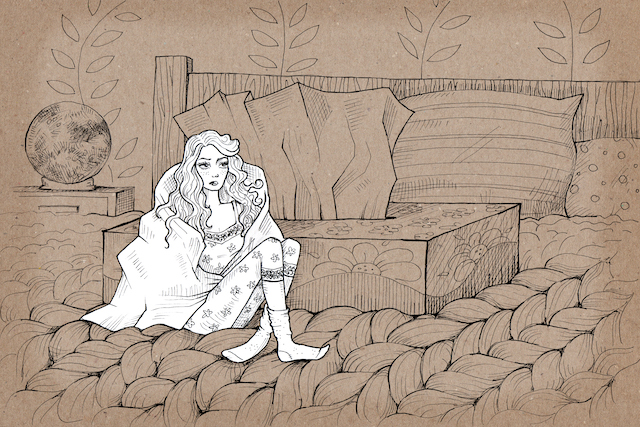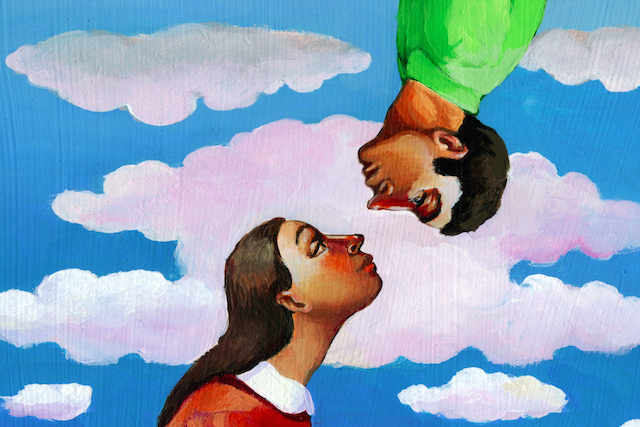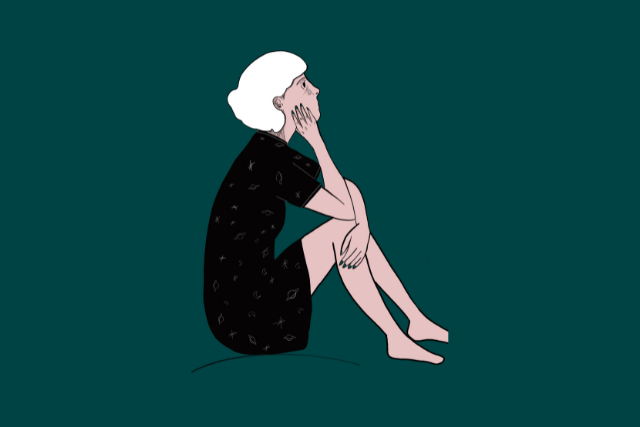
“When you say yes to others, make sure you aren’t saying no to yourself.” ~Paulo Coelho
Have you ever felt like no matter how much you give, it’s never enough? Like your worth is measured by how useful, accommodating, or strong you can be for others?
This invisible burden is what I call the Good Girl / Good Boy Wound—a deep-seated conditioning that tells us our value lies in pleasing others, even at the cost of losing ourselves.
For generations, we’ve been taught to shape ourselves according to the expectations of those around us. Girls are often encouraged to be ‘nice’ and agreeable, while boys are praised for toughness and independence. These messages shape us into adults who struggle to know who we truly are beyond what we can do for others.
I lived under the spell of this conditioning for much of my life, constantly striving to be “good” in the eyes of family, teachers, and colleagues. I excelled at meeting expectations, suppressing my needs, and avoiding any behavior that might be deemed “selfish.” But over time, I began to realize that the more I lived this way, the more disconnected I became from my own essence.
I wasn’t free—I was imprisoned by a set of rules that kept me from accessing my true power.
Surrendering Superwoman and Superman
For years, my Good Girl Wound hid itself behind the role of Superwoman. I believed that if I just tried harder, gave more, and proved my worth through my achievements, I would finally feel whole. But instead of feeling empowered, I felt drained and disconnected.
The moment of reckoning came when I realized that I didn’t actually know how to be myself—I only knew how to be useful.
Where had that idea come from? I think it’s everywhere in our culture—the need to prove our worth. I remember when I was about fourteen years old being deeply impacted by a commercial for the perfume Enjoli that ran all summer long. I can still see the woman and hear the jingle in my head.
“I can bring home the bacon,
fry it up in a pan,
and never, ever let him forget he’s a man,
‘cause I’m a woman!”
The tagline was, “The eight-hour perfume for your twenty-four-hour woman!” It’s laughable now, but at the time, it cut me to my core.
I grew up watching my mom try to please my highly critical dad, and never quite managing it. My dad, it seemed, held all the power. If we did as he expected, life was pretty good. But if not, there would be hell to pay. The message was clear—love was earned, not given freely, and it could be withheld at any time if we disappointed him.
Consequently, I grew up believing that my value had always been tied to what I could do for others, not to the truth of who I was. I am far from alone in this.
The relentless drive we have all been taught to embrace can lead to a perpetual sense of never doing enough, having enough, or even being enough. This dilemma is gender neutral and often sits at the heart of our sense of self-worth.
Letting go of the Super-persona required me to confront my deepest fears: Would I still be loved if I stopped over-giving? Would I still be worthy if I prioritized my own needs?
The answer, of course, was yes. But first, I had to reclaim my sovereignty.
Embracing Your Sovereign Power
Healing our wounding isn’t about rejecting kindness or care—it’s about learning to offer those gifts from a place of fullness rather than depletion. It’s about reclaiming the parts of ourselves that we abandoned in order to fit in. It’s about choosing to stand in our truth, even when it’s uncomfortable.
If you’ve ever felt guilty for setting boundaries, struggled to ask for help, or found yourself constantly prioritizing others at your own expense, you’re not alone. These behaviors often stem from deep-seated beliefs that tell us:
- “My worth is based on how much I do for others.”
- “If I say no, I’ll be letting people down.”
- “It’s selfish to put myself first.”
- “I should be able to handle everything on my own.”
These beliefs can be incredibly powerful, shaping our decisions and keeping us stuck in cycles of self-criticism and self-sacrifice. We often lose our way.
The good news is that we can break free from these old patterns when we begin to recognize them.
Shifting Beliefs and Accepting Support
To truly embrace your own needs and desires, it’s important to rewire the subconscious messages that keep you stuck. Here are some ways to begin shifting your mindset and creating lasting change:
1. Rewire the narrative.
Start by questioning the beliefs that hold you back. Ask yourself:
- Where did I learn this belief?
- Is it absolutely true, or is it a story I’ve been told?
- What would change if I believed something different?
Replacing outdated beliefs with more empowering ones, such as “My needs matter just as much as anyone else’s,” can be a game-changer.
2. Practice receiving.
Many of us are comfortable giving but struggle with receiving. Start small—accept a compliment without deflecting, allow someone to help you with a task, or say “yes” to an offer of support. Notice any discomfort that arises and remind yourself that you are worthy of care.
3. Own your desires.
Often, we suppress our true desires because we’ve been taught that they aren’t important. Take time to reconnect with yourself:
- What lights you up?
- What do you long for?
- If no one else’s needs were a factor, what would you choose for yourself?
Writing down your desires—even if they feel impossible right now—can help bring them into focus and make them feel more real.
4. Set boundaries with love.
Saying no can feel uncomfortable, but boundaries are an act of self-respect. Practice simple, clear statements like:
- “I appreciate the ask, but I’m not available for that.”
- “I need some time for myself right now.”
- “That doesn’t work for me, but here’s what I can offer.”
When we set boundaries from a place of love—both for ourselves and for others—we create space for deeper, more authentic relationships.
5. Surround yourself with support.
Breaking lifelong patterns is challenging, and you don’t have to do it alone. Seek out people who uplift you, who respect your boundaries, and who encourage your growth. Whether it’s a coach, therapist, friend, or community, having support makes all the difference.
Sovereign Living: Embracing a New Way of Being
Choosing to honor your needs and desires doesn’t mean disregarding others—it means showing up in relationships as a whole, authentic person. When you give from a place of fullness rather than depletion, your generosity becomes a gift rather than an obligation. By standing in your truth, you step into a life of greater ease, joy, and alignment.
Sovereign living is not a one-time event—it is an ongoing practice of choosing to stay true to yourself as you care for others. It is the work of dismantling old stories and embracing a new way of being. And most of all, it is about remembering that you are already whole, already worthy, and already free.
So ask yourself: What is one small way you can reclaim your sovereignty today? Maybe it’s setting a boundary, allowing yourself to receive, or simply recognizing your worth is not tied to what you do. Your journey to sovereignty starts with a single choice—what will yours be?
![]()
About Dr. Rima Bonario
Dr. Rima Bonario is a Dream Weaver, Soul-Coach, and Wild-Heart Healer who helps women reclaim their sovereignty and create lives filled with joy, purpose, and abundance. She is the author of The Seven Queendoms: A Soul-Map for Embodying Sacred Feminine Sovereignty. Learn more at rimabonario.com.
Get in the conversation! Click here to leave a comment on the site.
from Tiny Buddha https://ift.tt/1pMiuY2








 ($97), a course that will teach you the Jedi mind tricks to tap into your inner calm, even in the midst of chaos
($97), a course that will teach you the Jedi mind tricks to tap into your inner calm, even in the midst of chaos
